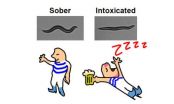(Press-News.org) The mysterious spotted green pigeon (Caloenas maculata) was a relative of the dodo, according to scientists who have examined its genetic make-up. The authors say their results, published in the open access journal BMC Evolutionary Biology, support a theory that both birds are descended from 'island hopping' ancestors.
The only known example of the spotted green pigeon is the Liverpool pigeon, which is currently in the World Museum, Liverpool. The only other known specimen has been lost, and there are no records of the bird in the wild. There is no record of where the pigeon was found, and it wasn't even known if the spotted green pigeon was a species, or just an unusual form of the Nicobar pigeon from around Indonesia.
The scientists took DNA from two feathers of the spotted green pigeon. Because of its age, the DNA was highly fragmented, so they focused in on three DNA 'mini barcodes' – small sections of DNA which are unique for most bird species. They looked at these sections of the pigeon's DNA, and compared it to other species.
This showed that the spotted green pigeon is indeed a separate species, showing a unique DNA barcode compared to other pigeons. The pigeon is genetically most closely related to the Nicobar pigeon and the dodo and Rodrigues solitaire, both extinct birds from islands near Madagascar. The spotted green pigeon shows signs of a semi-terrestrial island lifestyle and the ability to fly. The closely related Nicobar pigeon shows similar habits and has a preference for travelling between small islands.
The scientists say this lifestyle, together with the relationship of both pigeons to the dodo and Rodrigues solitaire supports an evolutionary theory that the ancestors of these birds were 'island hoppers', moving between islands around India and Southeast Asia. The birds that settled on particular islands then evolved into the individual species. The dodo's ancestor managed to hop as far as the island of Mauritius near Madagascar where it then lost the ability to fly.
Dr Tim Heupink, Griffith University Australia says: "This study improves our ability to identify novel species from historic remains, and also those that are not novel after all. Ultimately this will help us to measure and understand the extinction of local populations and entire species."
Clemency Fisher, Curator of Vertebrate Zoology at the World Museum says: "We are very pleased that the extinct spotted green pigeon has its correct place in the world of birds after more than 230 years. Tim Heupink's groundbreaking genetic research, analysing small fragments of DNA from tiny pieces of feather, proves the spotted green pigeon is unique and a distant relation to the Nicobar pigeon, the Rodrigues solitaire and the dodo of Mauritius".
INFORMATION:
Media Contact
Anna Perman
Media Officer
BioMed Central
T: +44 (0)20 3192 2429
E: Anna.Perman@biomedcentral.com
Notes to Editor
1. Research article
The mysterious Spotted Green Pigeon and its relation to the Dodo and its kindred.
Tim H Heupink, Hein van Grouw and David M Lambert
BMC Evolutionary Biology
During embargo, article available here:
https://www.dropbox.com/s/kf1zv6x2xxahdwv/The%20mysterious%20Spotted%20Green%20Pigeon%20and%20its%20relation%20to%20the%20Dodo%20and%20its%20kindred.pdf
After embargo, article available at journal website here:
http://www.biomedcentral.com/1471-2148/14/136
Please name the journal in any story you write. If you are writing for the web, please link to the article. All articles are available free of charge, according to BioMed Central's open access policy.
2. The pigeon specimen will be on display in the Liverpool Museum for two weeks from Wednesday 16th July. There will be opportunity for filming and a interviews with Clemency Fisher at the museum on Wednesday 16th July, through a booked appointment.
3. Images are available in this Dropbox https://www.dropbox.com/sh/uh2l8bc3j7dtfvp/AAA_XzrtPdUk-O0MCsSJDhZ8a
4. BMC Evolutionary Biology is an open access, peer-reviewed journal that considers articles on all aspects of molecular and non-molecular evolution of all organisms, as well as phylogenetics and palaeontology.
5. BioMed Central is an STM (Science, Technology and Medicine) publisher which has pioneered the open access publishing model. All peer-reviewed research articles published by BioMed Central are made immediately and freely accessible online, and are licensed to allow redistribution and reuse. BioMed Central is part of Springer Science+Business Media, a leading global publisher in the STM sector.
6. From the sea to the stars, a visit to World Museum reveals millions of years of the Earth's history through thousands of exhibits and hands on activities. Find out how humans have created the world we inhabit, from Africa to the Americas, Asia and Europe. Look out for the Ancient Egypt gallery where our collection is amongst the finest in Europe, bringing this age old civilisation to life. Discover the wonders of the natural world in the Clore Natural History Centre, packed full of mounted and preserved specimens of all types of animals, as well as rocks, minerals, fossils and plants. The Aquarium is home to fish from Australia to Anglesey, while an array of creepy crawlies live in the Bug House. Then, blast off on a spectacular journey through space and time as the universe unfolds around you in the Planetarium.
Dodos and spotted green pigeons are descendants of an island hopping bird
2014-07-16
ELSE PRESS RELEASES FROM THIS DATE:
Patients at highest risk of suicide in first 2 weeks after leaving hospital
2014-07-16
Mental health patients are at their highest risk of dying by suicide in the first two weeks after leaving hospital - a report out today shows.
Around 3,225 patients died by suicide in the UK within the first three months of their discharge from hospital – 18% of all patient suicides, between 2002-2012.
The University of Manchester's National Confidential Inquiry into Suicide and Homicide by People with Mental Illness found that 526 patients died within the first week, the peak time of risk in England, Northern Ireland and Scotland; it is the first two weeks in Wales. ...
Underlying cause of cerebral palsy could lie in family links
2014-07-16
This is the first study to investigate cerebral palsy over such a broad range of family relationships.
Cerebral palsy is the most common cause of physical disability in children, affecting approximately two in 1,000 live births in the developed world (and many more elsewhere). It originates from damage to the 'immature' brain and several risk factors in pregnancy have been identified such as preterm delivery, abnormal growth, exposure to infection and lack of oxygen at birth.
Previous studies have found a possible family link with cerebral palsy, but positive findings ...
Is it time to lock up those who commit research fraud?
2014-07-16
Dr Zulfiqar Bhutta, Robert Harding Chair in global child health and policy and Co-Director of the Centre for Global Child Health at the Hospital for Sick Children, Toronto believes that criminal sanctions are necessary to deter growing research misconduct.
He says the fact that research fraud is common is no longer news, but a review by PubMed in 2012 found that 67% of research article retractions were "attributable to scientific misconduct, including fraud or suspected fraud".
Dr Bhutta says the consequences of research fraud on human health can be "huge" and that ...
Mutation stops worms from getting drunk
2014-07-16
Neuroscientists at The University of Texas at Austin have generated mutant worms that do not get intoxicated by alcohol, a result that could lead to new drugs to treat the symptoms of people going through alcohol withdrawal.
The scientists accomplished this feat by inserting a modified human alcohol target into the worms, as reported this week in The Journal of Neuroscience.
"This is the first example of altering a human alcohol target to prevent intoxication in an animal," says corresponding author, Jon Pierce-Shimomura, assistant professor in the university's College ...
Rainwater discovered at new depths
2014-07-16
University of Southampton researchers have found that rainwater can penetrate below the Earth's fractured upper crust, which could have major implications for our understanding of earthquakes and the generation of valuable mineral deposits.
It had been thought that surface water could not penetrate the ductile crust - where temperatures of more than 300°C and high pressures cause rocks to flex and flow rather than fracture - but researchers, led by Southampton's Dr Catriona Menzies, have now found fluids derived from rainwater at these levels.
Fluids in the Earth's crust ...
Transplantation of new brain cells reverses memory loss in Alzheimer's disease model
2014-07-16
SAN FRANCISCO, CA—A new study from the Gladstone Institutes has revealed a way to alleviate the learning and memory deficits caused by apoE4, the most important genetic risk factor for Alzheimer's disease, improving cognition to normal levels in aged mice.
In the study, which was conducted in collaboration with researchers at UC San Francisco and published today in the Journal of Neuroscience, scientists transplanted inhibitory neuron progenitors—early-stage brain cells that have the capacity to develop into mature inhibitory neurons—into two mouse models of Alzheimer's ...
JAMA study: Stroke risk and death rates fall over past 2 decades
2014-07-15
Fewer Americans are having strokes and those who do have a lower risk of dying from them finds a new study led by Johns Hopkins Bloomberg School of Public Health researchers.
The study found a 24 percent overall decline in first-time strokes in each of the last two decades and a 20 percent overall drop per decade in deaths after stroke. However, the decline in stroke risk was concentrated mainly in the over-65 set, with little progress in reducing the risk of strokes among young people. In contrast, the drop in stroke-related deaths each decade was primarily found among ...
Physicians struggle to clinically diagnose early HIV infection
2014-07-15
Despite the belief that early HIV infection presents with a well recognized flu-like syndrome, most physicians are unable to use clinical skills to differentiate those who should and should not be tested for HIV infection, according to a study published July 15 in Journal of the American Medical Association (JAMA).
Researchers at the BC Centre for Excellence in HIV/AIDS and University of British Columbia, Oregon Health and Science University, and Duke University Medical Centre analyzed data from over 24,000 patients, and discovered physicians have great difficulty recognizing ...
Study finds decrease in incidence of stroke, subsequent death
2014-07-15
In a study that included a large sample of black and white U.S. adults from several communities, rates of stroke incidence and subsequent death decreased from 1987 to 2011, with decreases varying across age-groups, according to a study in the July 16 issue of JAMA.
Stroke ranks fourth among all causes of death in the U.S. and is recognized as a leading cause of serious physical and cognitive long-term disability in adults. Almost 800,000 Americans suffer a stroke each year, and over 600,000 of them are first-ever events. Stroke incidence varies by gender and ethnic group, ...
Telecare intervention improves chronic pain
2014-07-15
A telephone-delivered intervention, which included automated symptom monitoring, produced clinically meaningful improvements in chronic musculoskeletal pain compared to usual care, according to a study in the July 16 issue of JAMA.
Pain is the most common symptom reported both in the general population and patients seen in primary care, the leading cause of work disability, and a condition that costs the United States more than $600 billion each year in health care and lost productivity. Musculoskeletal pain accounts for nearly 70 million outpatient visits annually in ...

